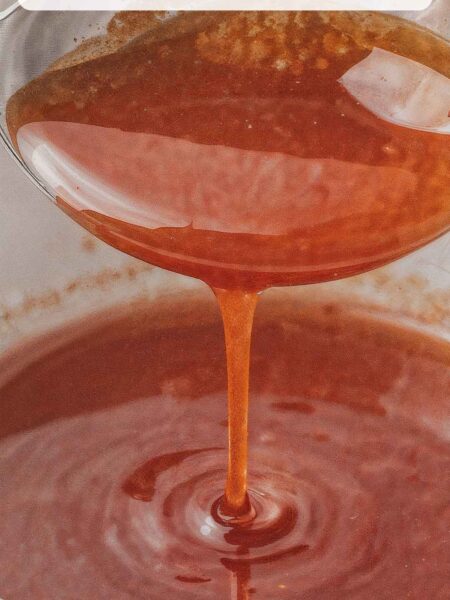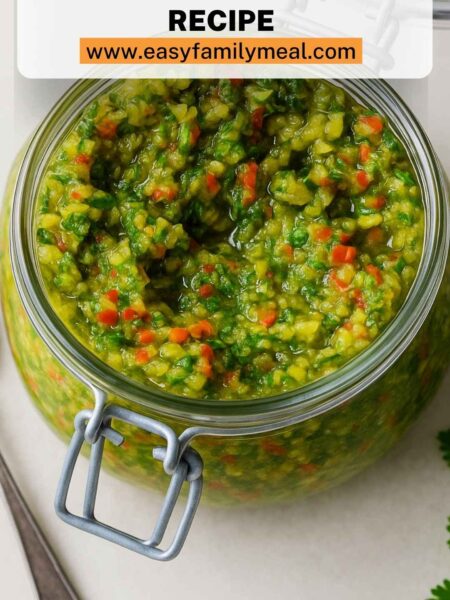Gather round, food lovers. Today, I’m excited to share something that has transformed my grilling experience: ssamjang. This isn’t just another sauce; it’s a delightful blend of flavors that will elevate your barbecue game. So, settle in, and let me take you through what makes this sauce a must-try.
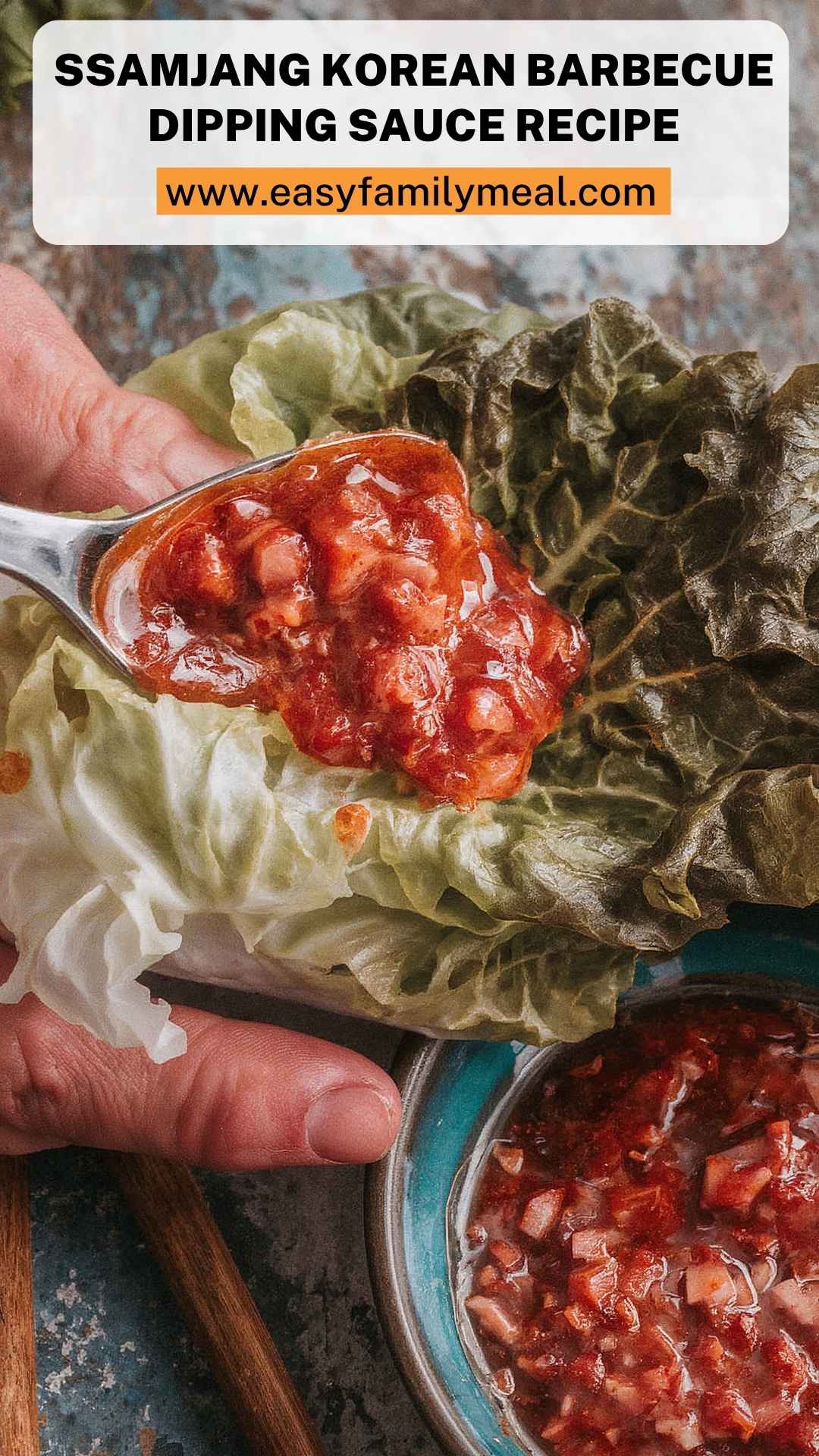
What is Ssamjang?
Ssamjang translates to “wrap sauce” in Korean. It’s a thick, savory concoction commonly used in Korean barbecue. Often paired with grilled meats and fresh vegetables, ssamjang is a multi-dimensional sauce that strikes a beautiful balance between spicy, sweet, and salty.
Its main ingredient is doenjang, a traditional Korean fermented soybean paste. Known for its rich umami flavor, doenjang brings a depth to the sauce.You might also notice gochujang, a red chili paste, which adds heat and sweetness.
Together, these ingredients create a flavor profile that dances on your palate. When I first tasted ssamjang, I felt an explosion of flavors that was unlike anything I had experienced. It practically begged for grilled mushrooms, bulgogi, or even a simple lettuce wrap.
Why You’ll Love This Ssamjang
Now, let me tell you why ssamjang deserves a spot in your kitchen. First and foremost, it’s incredibly versatile. Whether you’re hosting a casual barbecue or enjoying a quiet meal at home, it fits right in. You’ll be surprised at how easily it can enhance a variety of dishes. Plus, there’s something remarkable about its homemade nature. Crafting it in your own kitchen guarantees freshness.
I can attest that making ssamjang is quite effortless and rewarding. The satisfaction of whipping up your own dipping sauce will have friends and family coming back for more. And every time they do, you’ll bask in the glory of being the culinary genius behind it. So, let’s make some magic.
The Ingredients
Let me give you a rundown of what you’ll need for this delightful sauce:
- 1 tablespoon (15 ml) toasted sesame oil: This ingredient adds a nutty flavor and silky texture to the sauce. It’s like a warm hug for your taste buds.
- 1/4 cup (60 g; 60 ml) doenjang: This Japanese fermented soybean paste is the backbone of ssamjang. It’s savory and oh-so-rich.
- 2 scallions (40 g), finely sliced: Fresh and slightly oniony, scallions give a nice lift to the sauce.
- 1 teaspoon (5 ml) soy sauce: This will balance the flavors with its umami kick.
- 2 tablespoons (30 g; 30 ml) gochujang: Sweet and spicy, this is a pivotal ingredient that adds depth to the sauce.
- 1 teaspoon (5 ml) rice vinegar: A touch of acidity to cut through the richness.
- 2 large garlic cloves (10 g), crushed or minced: This aromatic addition provides a sharp flavor that rounds out the dish.
- 1 tablespoon (15 ml) Korean rice syrup: Offering a mild sweetness and smooth texture, this ingredient is the finishing touch.
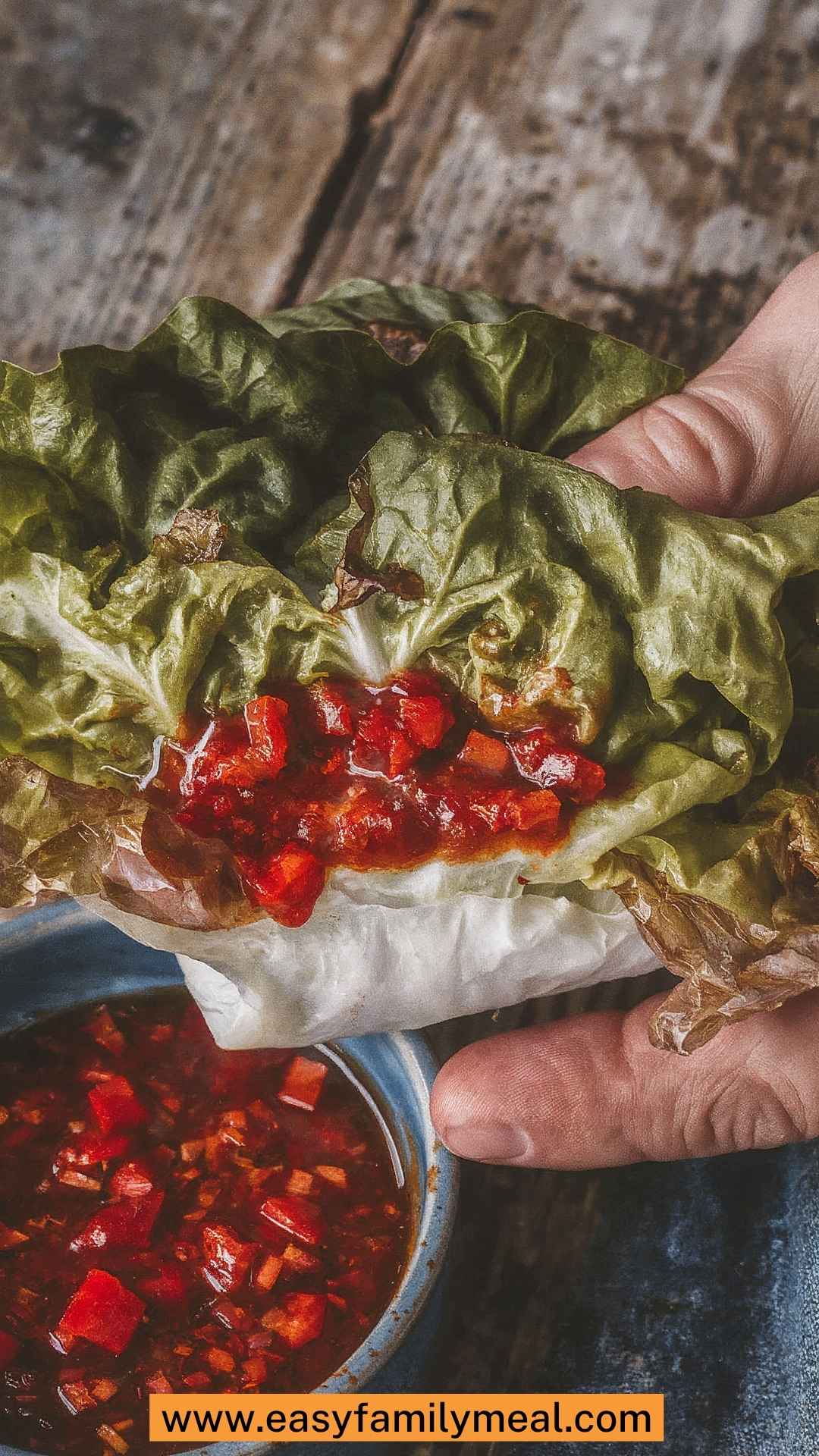
Step by Step Instructions
Step 1: Gather Your Ingredients
Before you dive in, get all your ingredients in one place. This ensures that you won’t have to scramble at any point. Trust me; this small step saves time and stress.
Step 2: Prepare the Doenjang Base
In a mixing bowl, take that ¼ cup of doenjang. Use a spoon to break it down a bit. You want it to be smooth but not entirely liquid. This will be the soul of our ssamjang.
Step 3: Add Sweet and Spicy Components
To the doenjang, add 2 tablespoons of gochujang. This part is crucial. It’s not just about heat; it’s about depth. Mix it well. Then, pour in 1 teaspoon of soy sauce and 1 tablespoon of Korean rice syrup. The syrup adds a slight sweetness that balances the flavors beautifully.
Step 4: Infuse Aromatic Flavors
Next up, we’ll bring in the garlic and scallions. Crush or mince 2 large garlic cloves and toss them into the sauce. Follow with the scallions. Mix everything together until you have a uniform mixture.
Step 5: Season and Finish
Now, we add that 1 tablespoon of toasted sesame oil and 1 teaspoon of rice vinegar. This duo adds a fantastic aroma and light acidity. Give it one last good mix, and voilà! You have your ssamjang.
Tips & Tricks
Here are some insider tips to elevate your ssamjang game:
- Adjust the Spiciness: If you’re sensitive to spice, feel free to reduce the amount of gochujang.
- Make it Ahead: This sauce develops flavors over time. Consider making it a few hours or even a day before serving.
- Customize It: Feel free to add some chopped cilantro or sesame seeds for variation.
- Experiment with Sugars: If you haven’t got rice syrup, brown sugar can work just as well.
- Spice It Up: Want more heat? Add a sprinkle of crushed red pepper or a bit more gochujang.
Can I Store Ssamjang?
Absolutely! You can store ssamjang in an airtight container in the refrigerator. It’ll last for up to a week, possibly longer. Just remember that the flavors will intensify over time. Make sure to stir it again before you use it!
What Can I Serve with Ssamjang?
Now that you’ve made your very own ssamjang, here are some ideas on what to serve it with:
- Grilled Meats: Beef, pork, or chicken perfectly complement the sauce. Picture wrapping a piece of grilled meat with fresh lettuce and a dollop of ssamjang — it’s bliss.
- Vegetable Wraps: Grilled zucchini, mushrooms, or other veggies can be enhanced with this sauce.
- Rice Dishes: Ssamjang can also add a flavorful kick to plain rice.
- Korean Tacos: Yes, you read that right! These tacos, stuffed with your favorite grilled fillings, work wonderfully with ssamjang.
- Salads: Drizzle it over a simple salad for an unusual twist.
Variations
If you want to get creative, here are some variations for ssamjang that you might enjoy:
- Sesame Seed Ssamjang: Add 1 tablespoon of toasted sesame seeds to the sauce to give it a crunch. This adds texture to every bite.
- Heat Wave Ssamjang: Incorporate a splash of sriracha or a diced jalapeño pepper if you’re on a spicy kick.
- Sweet and Tangy Ssamjang: Mix in a bit of honey or maple syrup for a sweeter version that pairs perfectly with grilled seafood.
- Herbed Ssamjang: Fold in finely chopped herbs such as cilantro or parsley for a fresh twist.
- Citrus Ssamjang: Add a squeeze of lime or lemon juice. The acidity gives a vibrant freshness that brightens up the sauce.
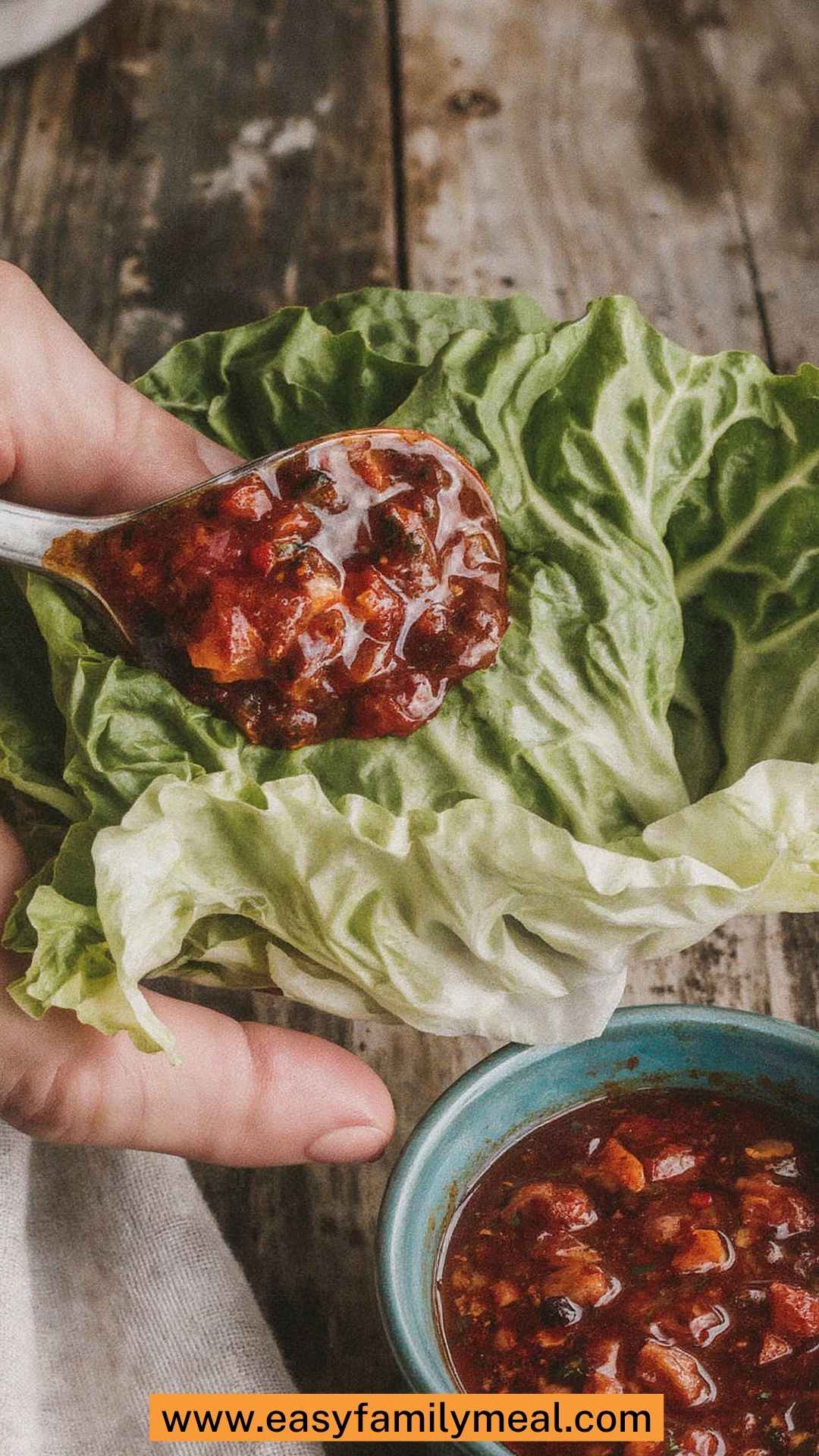
Conclusion
There you have it! Ssamjang is a delightful, flavorful sauce that can elevate any meal. It’s simple to prepare, and I can assure you that it will quickly become a staple in your kitchen.
Instead of reaching for store-bought sauces that often lack personality, try crafting this rich, savory, and slightly sweet dipping sauce.
The satisfaction of serving something homemade is undeniable. Get ready for new flavor combinations and culinary adventures. Fire up those grills; this dipping sauce is ready to shine! Enjoy every bite!
You’ll also like the following recipes!
- How to Smoke Salmon Recipe
- Oyakodon Japanese Chicken And Egg Rice Bowl Recipe
- The Best Basic Guacamole Recipe
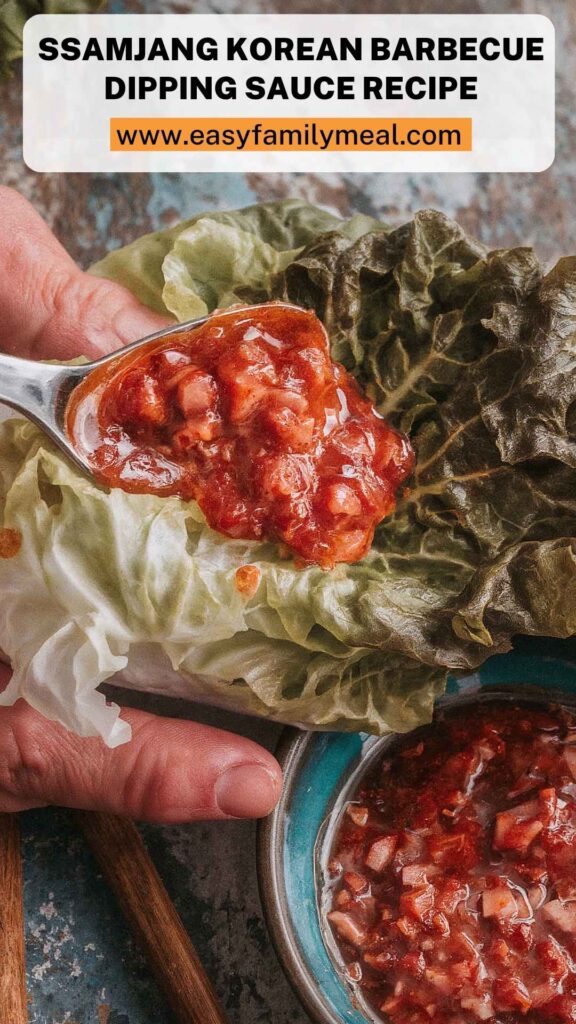
Ssamjang Korean Barbecue Dipping Sauce Recipe – Easy Family Meal
Description
Gather round, food lovers. Today, I'm excited to share something that has transformed my grilling experience: ssamjang. This isn’t just another sauce; it’s a delightful blend of flavors that will elevate your barbecue game. So, settle in, and let me take you through what makes this sauce a must-try.
Ingredients
Instructions
Step 1: Gather Your Ingredients
-
Before you dive in, get all your ingredients in one place. This ensures that you won’t have to scramble at any point. Trust me; this small step saves time and stress.
Step 2: Prepare the Doenjang Base
-
In a mixing bowl, take that ¼ cup of doenjang. Use a spoon to break it down a bit. You want it to be smooth but not entirely liquid. This will be the soul of our ssamjang.
Step 3: Add Sweet and Spicy Components
-
To the doenjang, add 2 tablespoons of gochujang. This part is crucial. It’s not just about heat; it’s about depth. Mix it well. Then, pour in 1 teaspoon of soy sauce and 1 tablespoon of Korean rice syrup. The syrup adds a slight sweetness that balances the flavors beautifully.
Step 4: Infuse Aromatic Flavors
-
Next up, we’ll bring in the garlic and scallions. Crush or mince 2 large garlic cloves and toss them into the sauce. Follow with the scallions. Mix everything together until you have a uniform mixture.
Step 5: Season and Finish
-
Now, we add that 1 tablespoon of toasted sesame oil and 1 teaspoon of rice vinegar. This duo adds a fantastic aroma and light acidity. Give it one last good mix, and voilà! You have your ssamjang.
Nutrition Facts
Servings 4
- Amount Per Serving
- Calories 55kcal
- % Daily Value *
- Total Fat 3.7g6%
- Saturated Fat 0.5g3%
- Sodium 25mg2%
- Total Carbohydrate 6g2%
- Sugars 5g
* Percent Daily Values are based on a 2,000 calorie diet. Your daily value may be higher or lower depending on your calorie needs.
Note
- Adjust the Spiciness: If you’re sensitive to spice, feel free to reduce the amount of gochujang.
- Make it Ahead: This sauce develops flavors over time. Consider making it a few hours or even a day before serving.
- Customize It: Feel free to add some chopped cilantro or sesame seeds for variation.
- Experiment with Sugars: If you haven’t got rice syrup, brown sugar can work just as well.
- Spice It Up: Want more heat? Add a sprinkle of crushed red pepper or a bit more gochujang.



